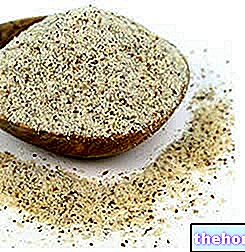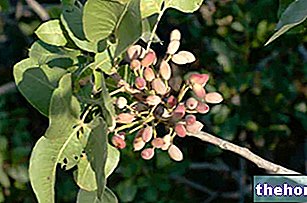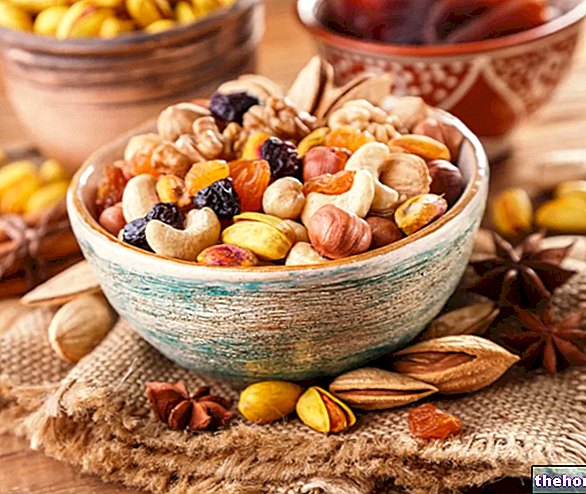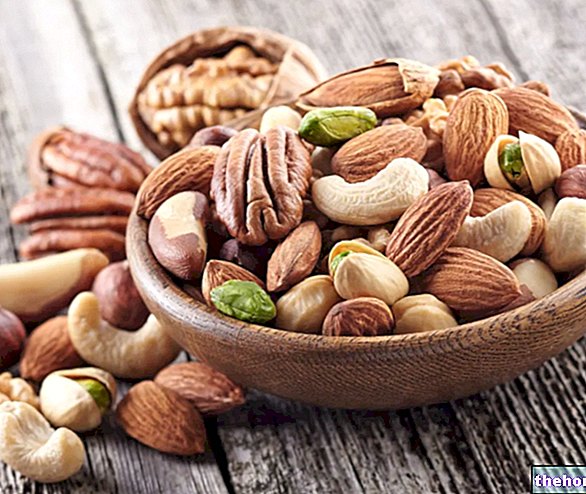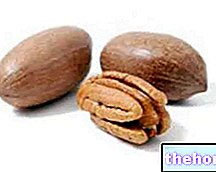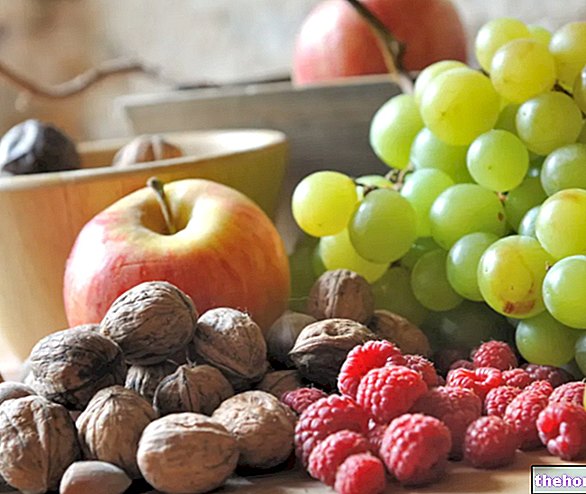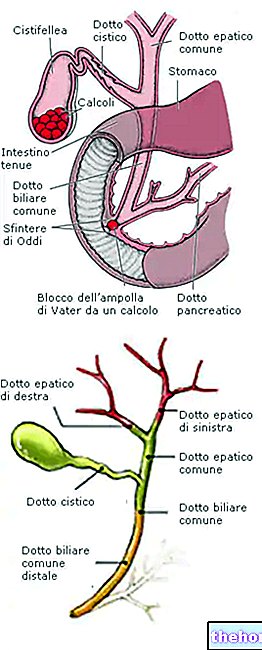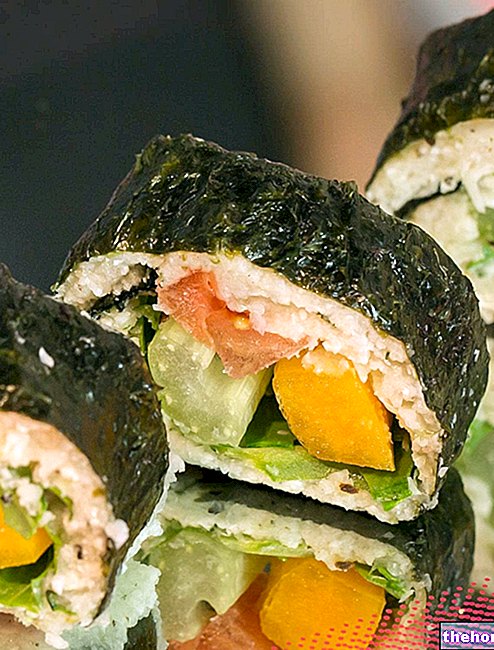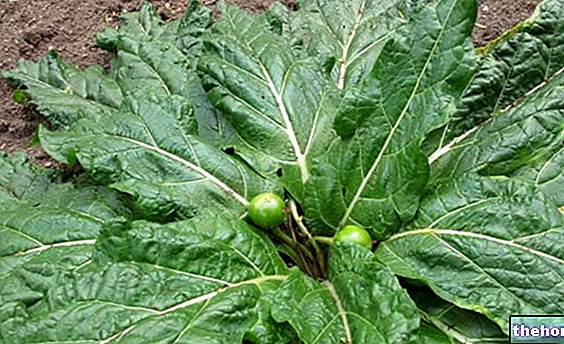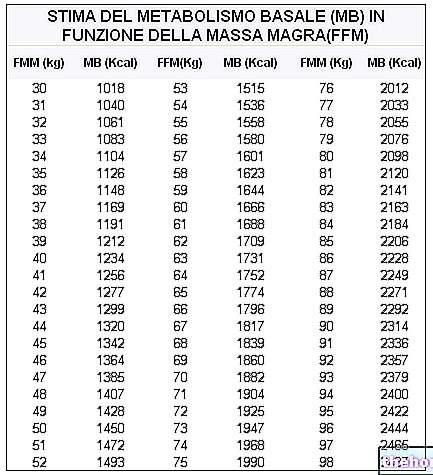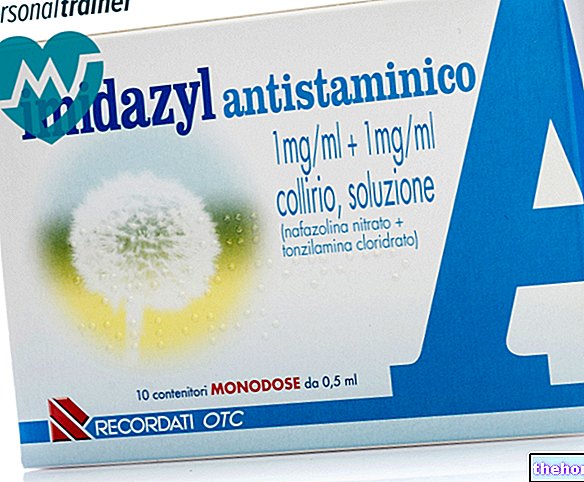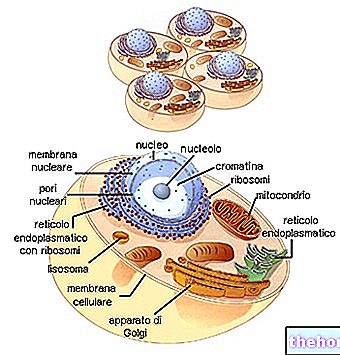What are?
THE dried figs are foods of vegetable origin obtained by processing the fruits of the tree commonly called "fig", this plant belongs to the species Ficus carica, of which several varieties differ.
It is good to specify that what we have just defined fig fruit it is actually a large infructescence called syconium; the real fruits of the fig develop inside this infructescence and are commonly called seeds (in reality they are achenes, dried fruits inside which the seed is enclosed).

Figs are classified in the VI-VII food group even if, like the other preserved fruits, the dried ones do not have all the peculiar characteristics of this whole. In the next chapter we will understand why.
Dried figs are obtained by dehydration; this process, typical of many other preserved foods (dried plums, dried apricots, dried tomatoes, dried meat, cod, bottarga, aged cheeses, etc.), in this specific case is obtained ONLY thanks to ventilation and / or heat (soft). Therefore, it is possible to obtain dried figs also by means of a good ventilated oven, avoiding the addition of osmotic chemical elements (generally sugar and / or salt) which, while favoring this process, tend to significantly modify the nutritional characteristics of the food. .
There are various types of dried figs, different for: variety of fig, drying method, presence of other ingredients, use of additives (antioxidants, preservatives) etc. In addition to the simple ones, there are dried figs covered with chocolate, dried figs stuffed with almonds, glazed dried figs (sugar or honey), dried figs in alcohol, etc.
Nutritional Characteristics
ATTENTION! Below we will comment only on the nutritional properties of simple dried figs, not those glazed or almond or chocolate etc; some of these are however mentioned in the summary table.
As anticipated, dried figs should belong to the VI-VII food group. However, it is not about fresh fruit; therefore, they do not have all the characteristics necessary to fall into the category.
Dried figs have a very high energy intake, mainly provided by carbohydrates (high glycemic load); on the contrary, proteins and lipids appear in marginal quantities. The high caloric density of dried figs precludes its use in the diet against overweight.
The carbohydrates of dried figs are simple and mainly made up of fructose (monosaccharide with a low glycemic index); the peptides are of low biological value and the fatty acids mainly unsaturated (especially polyunsaturated). Among the latter there are also certain essential nutrients of the omega 3 and omega 6 groups, which are beneficial for lipid metabolism and blood pressure; the lipid component is however enclosed within the "seeds" which, if not chewed, pass through the intestine and are expelled.
Dried figs are also very rich in fibers, which help to reduce the glycemic index of the food which, however, is of medium entity. Considering that both the glycemic growth rate (glycemic index) and the maximum glycemic peak (glycemic load), are responsible for the stimulation of insulin, it is possible to establish that dried figs are NOT suitable for the nutrition of people suffering from certain metabolic impairments. These include hyperglycemia (or overt type 2 diabetes mellitus) and hypertriglyceridemia, often correlated with each other.
The dietary fibers of dried figs also contribute to the maintenance of good intestinal function, preventing constipation and feeding the physiological bacterial flora (prebiotic function). It should however be specified that, to obtain a laxative effect, it is essential to associate dried figs with abundant quantities of water, without which there is the risk of obtaining the opposite effect.
Dried figs, being rich in seeds, should be excluded from the preventive diet for diverticulitis.
As far as mineral salts are concerned, dried figs are rich above all in potassium (useful for sportsmen and others) but also abound in calcium and phosphorus (necessary for the correct development and maintenance of bone mass); the iron intake is moderate (probably not very bioavailable).
With regard to vitamins, a good content of thiamine (vit B1) and retinol equivalents (pro vit A) is evident.
Dried figs are suitable for the diet of those intolerant to gluten and / or lactose; moreover, they do not present any complications of an ethical-religious nature (vegetarians, vegans, Muslims, Jews, Hindus, etc.).
The average portion of dried figs is about 40g (100kcal), or about 4 units (10g l "one).
Some dried figs, especially commercial ones, contain food additives such as sulfur dioxide.
Figs Stuffed with Ricotta
Problems with playing the video? Reload the video from youtube.
- Go to the Video Page
- Go to the Video Recipes Section
- Watch the video on youtube
Other Foods - Fruits Apricots Sour cherries Cashews Pineapple Watermelon Orange Avocado Banana Persimmon Persimmons Apple Chestnuts Cedar Cherries Coconut Watermelon Dates Feijoa Fig of India Figs Strawberries Berries Passion fruit (Maracujà, Granadilla) Jujube Kiwi Raspberries Coconut milk Lemons Almond milk Mango Apples Quinces Pomegranate Melon Blackberries Mustard Medlar Olives Taggiasca Olives Fermented Papaya Pears Peaches Plantains (Cooking Bananas) Pomelo Grapefruit Pink Grapefruit Plums, prunes Fruit juices and fruit juices Grape juice Plums Grapes Sultanas and Raisins OTHER ITEMS FRUIT Categories Food Alcoholics Meat Cereals and derivatives Sweeteners Sweets Offal Fruit Dried fruit Milk and derivatives Legumes Oils and fats Fish and fishery products Salami Spices Vegetables Health recipes Appetizers Bread, Pizza and Brioche First courses Second courses Vegetables and Salads Sweets and Desserts Ice cream and sorbets Syrups, liqueurs and grappas Prepare Basic tions ---- In the kitchen with leftovers Carnival recipes Christmas recipes Light diet recipes Women's, mom's and dad's day recipes Functional recipes International recipes Easter recipes Gluten-free recipes Diabetic recipes Holiday recipes Valentine's Day recipes Vegetarians Protein recipes Regional recipes Vegan recipes

